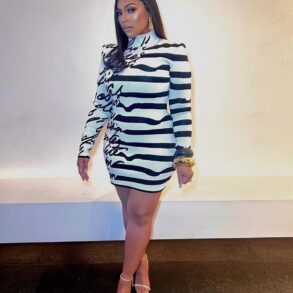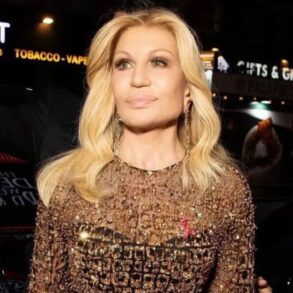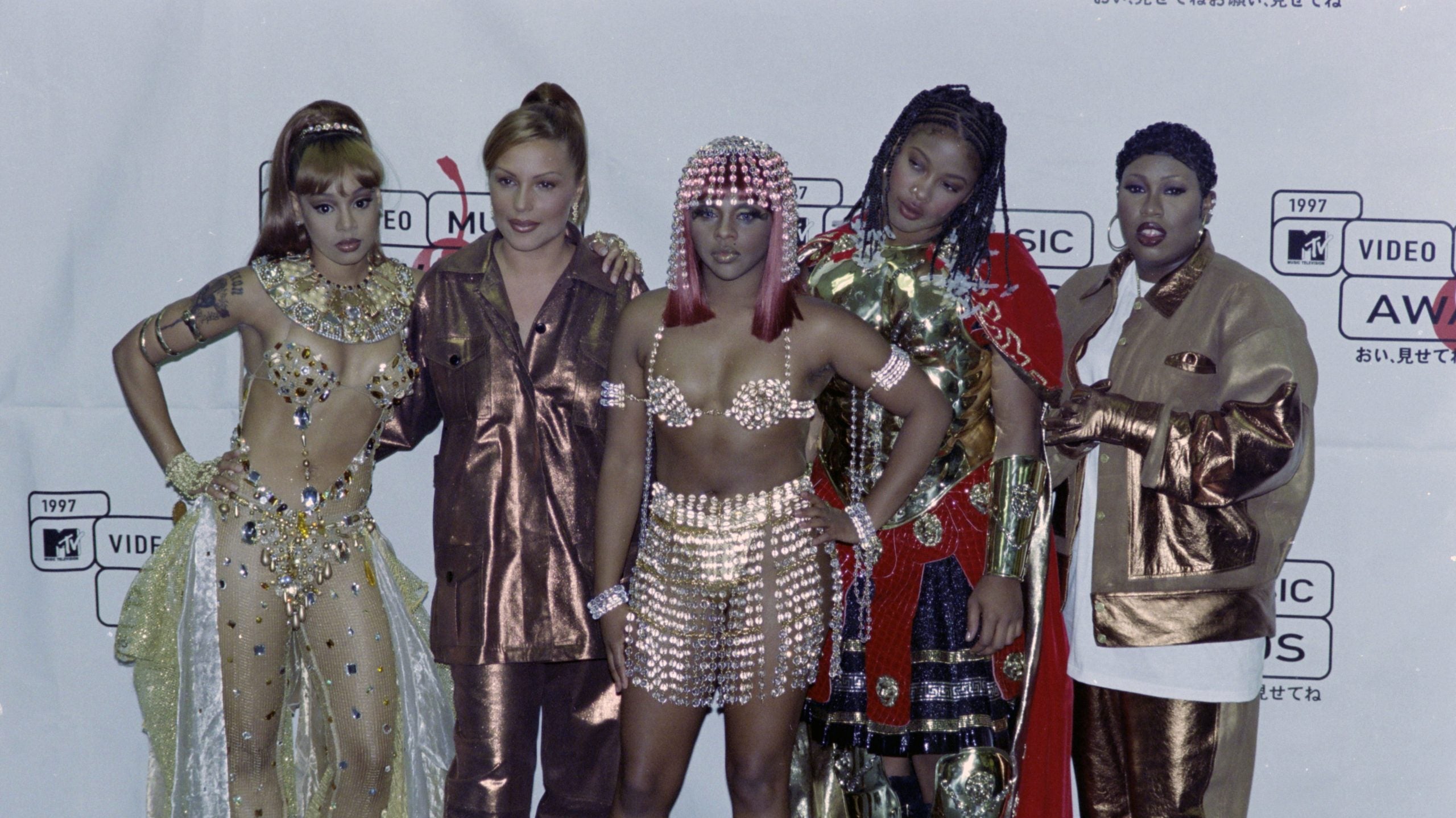
Women in hip hop have offered up some of the most thrilling and experimental looks over the past five decades. This strong lineage pours over into the rappers who are dominating the industry currently, think Doja Cat, Megan Thee Stallion and Latto. Their highly publicized style moments wouldn’t be possible though without the women who came before them–this includes fashion mavens like Salt-N-Pepa, Queen Latifah, Lil’ Kim and more. And since the genre is largely dominant within American culture, women in rap have always utilized their fashion choices as a means to express themselves, but also to gain influence.
In the late 1970s, quintessential MCs were embracing streetwear pieces that were the direct opposite of what was being worn by the generation that preceded them. Inspired by the Black Power Movement, early male rappers, DJs and B-Boys wore tracksuits, Kangol hats, sneakers and gold chains. But, on the other end of the spectrum, for rap’s debut on “SNL” in 1981, Wilmington, North Carolina’s MC Sha-Rock–also known as the first female rapper–wore a fuchsia top and white fringed cowboy boots. She appeared alongside the group she was a part of, the Funky Four Plus One which originated in the Bronx.
1980s
This moment is ingrained in the minds of so many women and even that would come after Sha-Rock. It also serves as a precursor to the style indicators that Black female rappers would lean on in the forthcoming decade, the 1980s. In this era the ubiquitous influence of hip hop became largely prominent–therefore some of the early voices during this time period looked to what their male counterparts were wearing for style inspiration. This adaptation of street fashion cues and braggadocious confidence was a means to gain recognition for their skills. “They dressed this way in order to kind of play on an equal playing field… it’s only slowly over time where women start to gain the respect and the confidence that they’re able to bring in more of their femininity,” said Elizabeth Way, assistant curator at the Museum at FIT.
Throughout the late 1980s streetwear pieces would continue to be associated with the growing genre. During this time frame ultra-large earrings, straightened hair or crimped hair worn with colorful two-piece sets was the norm. The feminine rise in hip hop is captured intimately in the Female Rappers, Class of ‘88 photograph. In it, artists like Roxanne Shanté, MC Lyte, Yvette Money, Sparky D, Sweet Dee, MC Peaches, Finesse, and Ms. Melody are showcased leaning into the androgynous streetwear look. This image makes it astoundingly clear that this was the definitive look that these women were embracing while they released their history-making songs.
Brooklyn native MC Lyte who is considered one of hip hop’s pioneering female voices serves as an example of the development of the genre’s style. In 1988, when she unleashed her first single, “Paper Thin,” and its accompanying video, her style in it spoke volumes. Her tracksuit, varsity jacket and oversized doorknocker earrings established her as a force to be reckoned with in hip hop. Subsequently, when she released her debut album that same year, Lyte As A Rock she was catapulted into rap superstardom.
The end of the 1980s was marked by the arrival of Salt-N-Pepa, the all female rap group formed in Queens, New York, which was comprised of Cheryl “Salt” James, Sandra “Peppa” Denton and DJ Spinderella. While men were still predominantly seen as the figureheads of hip hop, this trio was leaving a mark too, especially style-wise. They subverted the ideal that androgynous pieces were necessary–instead Salt, Pepa and DJ Spinderella wore color-blocked jackets, dookie chains, Afrocentric patterns, and blunt colorful hairstyles.
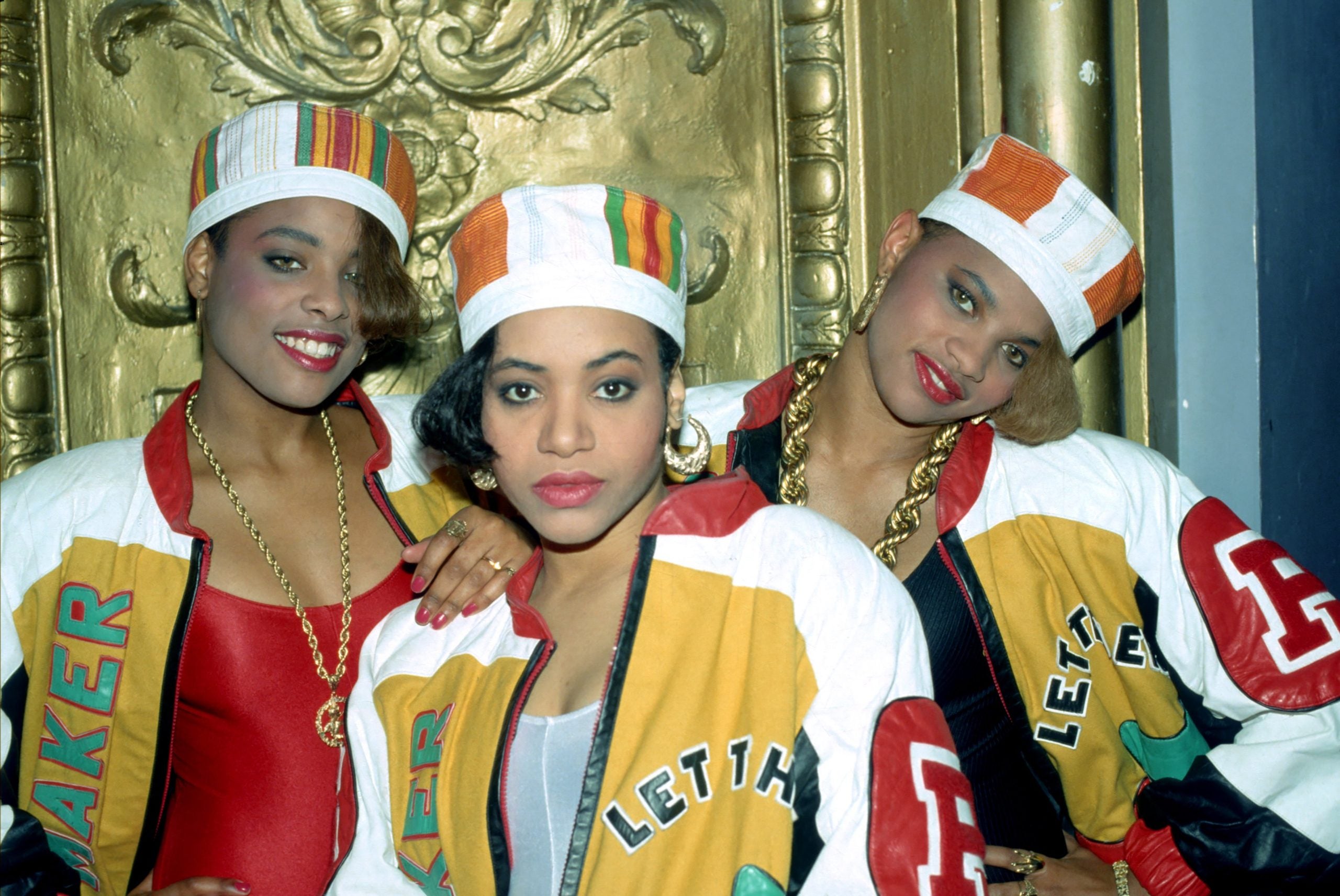



The height of their style reign can be seen in their “Push It” video where they donned custom Magic 8 Ball jackets created in collaboration with Dapper Dan and Christopher “Play” Martin of Kid ‘N Play. Salt-N-Pepa’s outfits were significant due to the music and lyrical content that accompanied them. Exploration of topics like sex and sex positivity that were previously seen as taboo were often explored with energetic enthusiasm by these trailblazers.
1990s
In the earliest years of the 1990s era of hip hop, women’s fashion for its biggest acts was still being partially dictated by what men were wearing. A few acts who were following these cues include New Jersey’s Queen Latifah, Chicago native Da Brat and also MC Lyte. Separately, Queen Latifah was also choosing to fully embracing Afrocentric imagery, she wore African-inspired patterns, dashikis. This skilled MC was ushering in a distinct era for herself whilst sharing rhymes that spoke of unity.
By 1992, hip hop and R&B were being experimented with and being used interchangeably in multiple music markets–TLC was at the forefront of this fusion of sounds, other variations of the genre-blending were also wildly popular like New Jack Swing. Aside from breaking barriers lyrically with songs like “Let’s Talk About Sex,” and “Whatta Man,” T-Boz, Left-Eye and Chili were pushing against masculinity with their cropped tees and oversized denim jeans. Who could forget when Left-Eye wore a condom in the frame of her glasses as a nod to safe sex?
When the mid to late 1990s hit, Lil’ Kim and Foxy Brown were the faces of female hip hop. They would also become known for how they embraced their femininity to market themselves. With the mastermind Misa Hylton as her stylist, Lil’ Kim debuted a plethora of iconic fashion moments. One such moment was the mega-hit “Crush On You” video which was inspired by “The Wiz,” in it she wore 1950s-housewife wigs and colorful furs (Hylton costume designed the video).
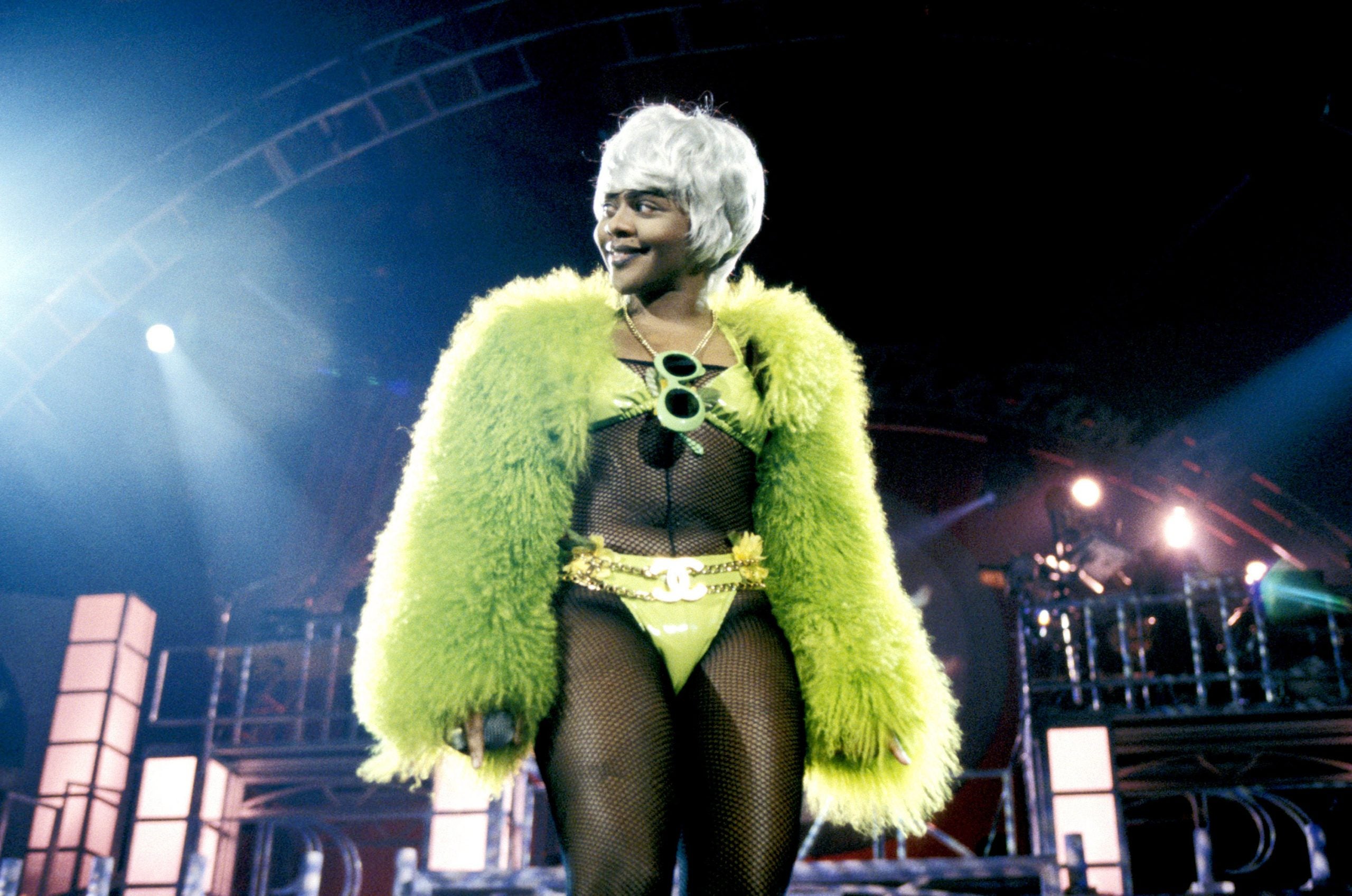



The Brooklyn-bred femcee regularly donned sky-high heels, custom pieces by Donatella Versace and Marc Jacobs–both of these designers considered her to be their muse. With her raunchy lyrics and bold fashion transformations, Lil’ Kim was viewed as a sex symbol. “If Kim had not taken the risks in music and fashion that she did, female rappers would probably still be underplaying their looks just to legitimize their music,” said Hylton in “The Motherlode” by Clover Hope. She also said, “Kim created another lane, allowing women to shape their own images and express themselves in any way they want through style.”
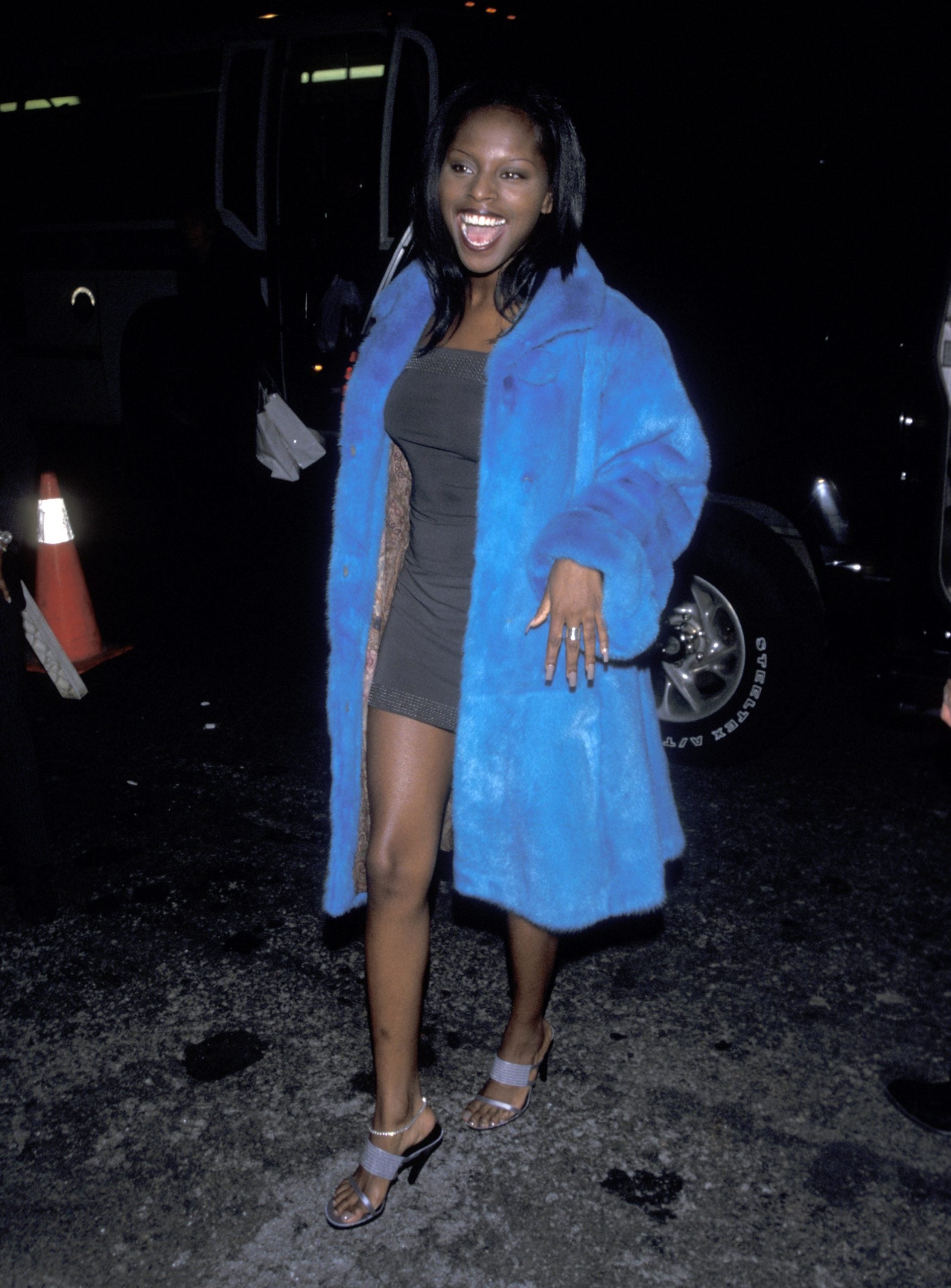



During this same time period The Source, questioned if Foxy Brown and Lil’ Kim were “Harlots or Heroines” for their 1997 magazine cover. The hip hop bible was attempting to dissect the images and lyrical content of both the rappers debut records: Ill Na Na (Brown) and Hardcore (Lil’ Kim) which both released in 1996. Foxy Brown who was the self-proclaimed “dark skinned, Christian Dior poster girl,” wasn’t looking to be understood though, she was writing and performing blistering, hardcore rhymes about one-night stands, and the designer goods she could afford. These brands spanned Dior, Fendi, Prada, Armani and Chrisitan Louboutin. On red carpets she frequently sported Tom Ford, Gucci and much, much more. John Galliano and Calvin Klein were even creating customs for Brown. Her confidence and how she annihilated tracks, which also featured male acts, place her firmly in the rap canon.
2000s
By the millennium, hip hop had entered the lexicon of pop culture, and the “bling” era was born. Overconsumption of luxury goods reigned throughout the beginning years of the 2000s. More acts kept rising, and Missy Elliott would become a household name during these years. Hailing from Portsmouth, Virginia, Elliott was wildly imaginative and when she eventually linked up with equally creative types, magic was made.
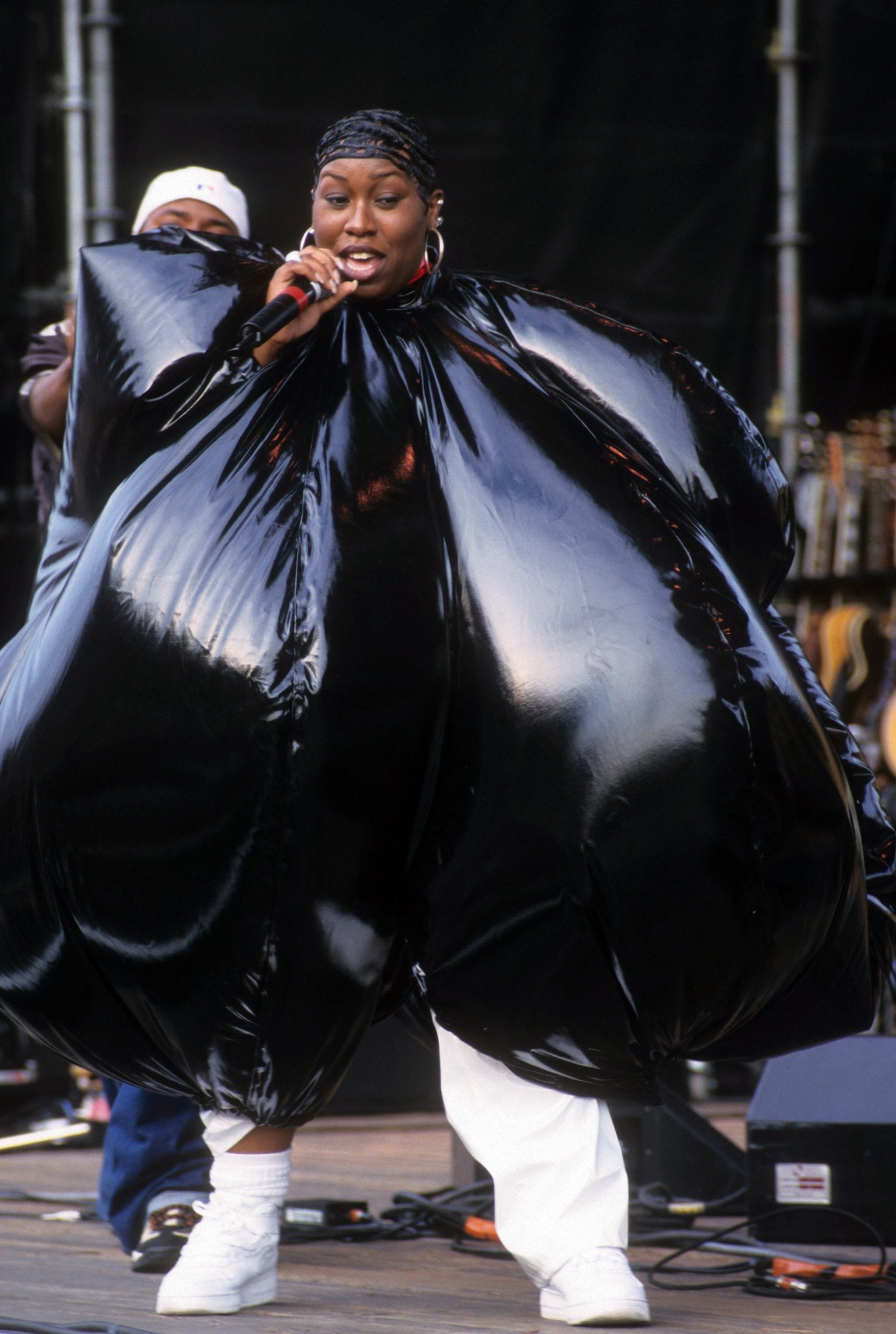



One of her most significant style moments: her garbage bag outfit in her first video “The Rain (Supa Dupa Fly)” is still heralded as a historic hip hop feat. Director Hype Williams, stylist June Ambrose and Elliott made this collaboration happen. Pulling inspiration from Michael Jackson and the Michelin Man, the rapper wore a blown-up garbage bag and was seen through a fish-eye lens. This introduced both the rap music community and music lovers alike to Missy’s wacky and style-bending universe. What would come were futuristic and memorable videos–with those visuals she also always served up cheeky, sex-positive lyrics. Next, in her Williams-directed “Sock It To Me” video Elliott wore a Transformers-like robot uniform. “Instead of shrinking, Missy amplified herself, treated her body as art, and framed sex as comical pleasure,” writes Clover Hope in “The Motherlode.”
Alternatively, Eve of West Philadelphia who debuted with the Ruff Ryders, the “pit bull in a skirt” served up appealing looks such as low-cut tops and form-fitting designer jeans. Her paw print tattoos always on display added an edge to every single look she served. Eve was constantly fusing high fashion with street style accompanied by bold hair color choices. “Eve was a very instrumental part of the relationship between hip hop and the fashion community growing,” said Marc Byers, her former manager, in an interview with Clover Hope.
In the “Let Me Blow Ya Mind” video Eve flexed her well-known biker chic style inclinations–she sported a sleek leather jacket with feminine pieces. At the peak of her music career, she was wearing Tom Ford, Karl Lagerfeld, and Fendi. Eve’s rhymes were just as pivotal too, in her music, she heavily focuses on repping for her crew, living lavishly and she even told tales of revenge like on “Love Is Blind” where she raps for women who are being abused. Her fashion savvy even led to her briefly successful line Fetish–though no longer active, the line was available in stores at the same time as historic hip hop houses Baby Phat, Lady Enyce and Beyoncé’s House of Dereon.
2010s & Beyond
When Nicki Minaj (Onika Maraj) bursted onto the hip hop scene and was dropping mixtapes she donned black lengthy hair and simply was known for her outlandish, witty raps. Her appearance on Kanye West’s “Monster” will forever go down as one of her hottest feature verses.
As her career progressed, she would experiment with different wig styles mostly pink and blonde, which is pulled directly from her predecessor Lil’ Kim. Campy, maximalist looks also were worn by the Queens-bred rapper during her Young Money run. When she reached legend status after being the sole female rapper to dominate the charts and also the hearts of rap fans she began endorsing the designs of Alexander McQueen and Tom Ford.
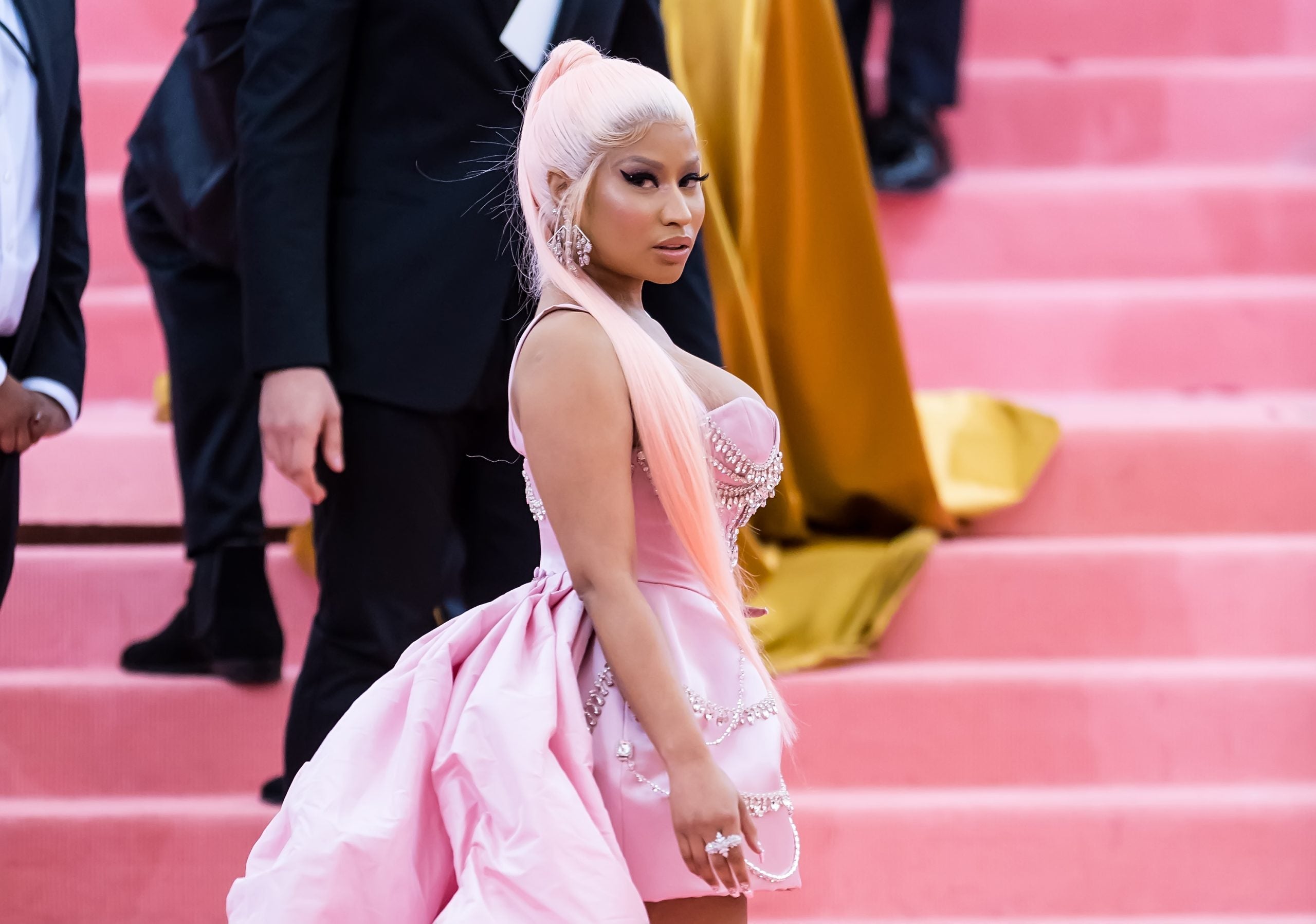



For current red carpet events, Minaj often graces red carpets with upper crust atelier pieces by Ricardo Tisci, Alexandre Vauthier Couture, Marc Jacobs, Off-White and more. She also constantly delivers immaculate Met Gala looks each year she decides to attend–this is no small feat given how tedious the event is for fashion lovers and insiders. Her hunger for the rap game is still prevalent, and Minaj has birthed a plethora of “daughters” who attempt to regurgitate the blueprint she created: only a few actually thrive though. (Minaj has more Billboard Hot 100 hits than any other female musician).
Cardi B–another fashion chameleon reached success by staying true to herself. Her style origins also have humble beginnings, but Belcalis Almánzar is so accomplished that those roots simply don’t matter anymore. Though her entry point to success may have been social media and reality-television (Love & Hip Hop), the core of her music also was filled with compelling commentary on her own life hustling and stripping. Making a name for herself in the mixtape circuit in New York City would eventually lead her to Atlantic Records and later her Grammy-winning debut album Invasion of Privacy.
It’s only right that Cardi’s meteoric rise is now accompanied by custom couture by Schiaparelli and Christopher John Rogers to name a few–her stylist Kollin Carter is largely responsible for these moments. The rapper put the time in, and she deserves it all.
Doja Cat also known as Amala Ratna Zandile Dlamini admits to being an uber-fan of Nicki Minaj on multiple occasions. Despite this, the rapper-singer-songwriter is constantly pushing her own fashion agenda with her creative partner Brett Alan Nelson. She too has campy origins, but now she’s transformed from her “Mooo!” viral moment to sitting front row at global fashion presentations. Whether at Paris Fashion Week or the streets of New York City, Doja is always keeping us on our toes when she’s rocking Givenchy, Schiaparelli, Oscar De La Renta and more.
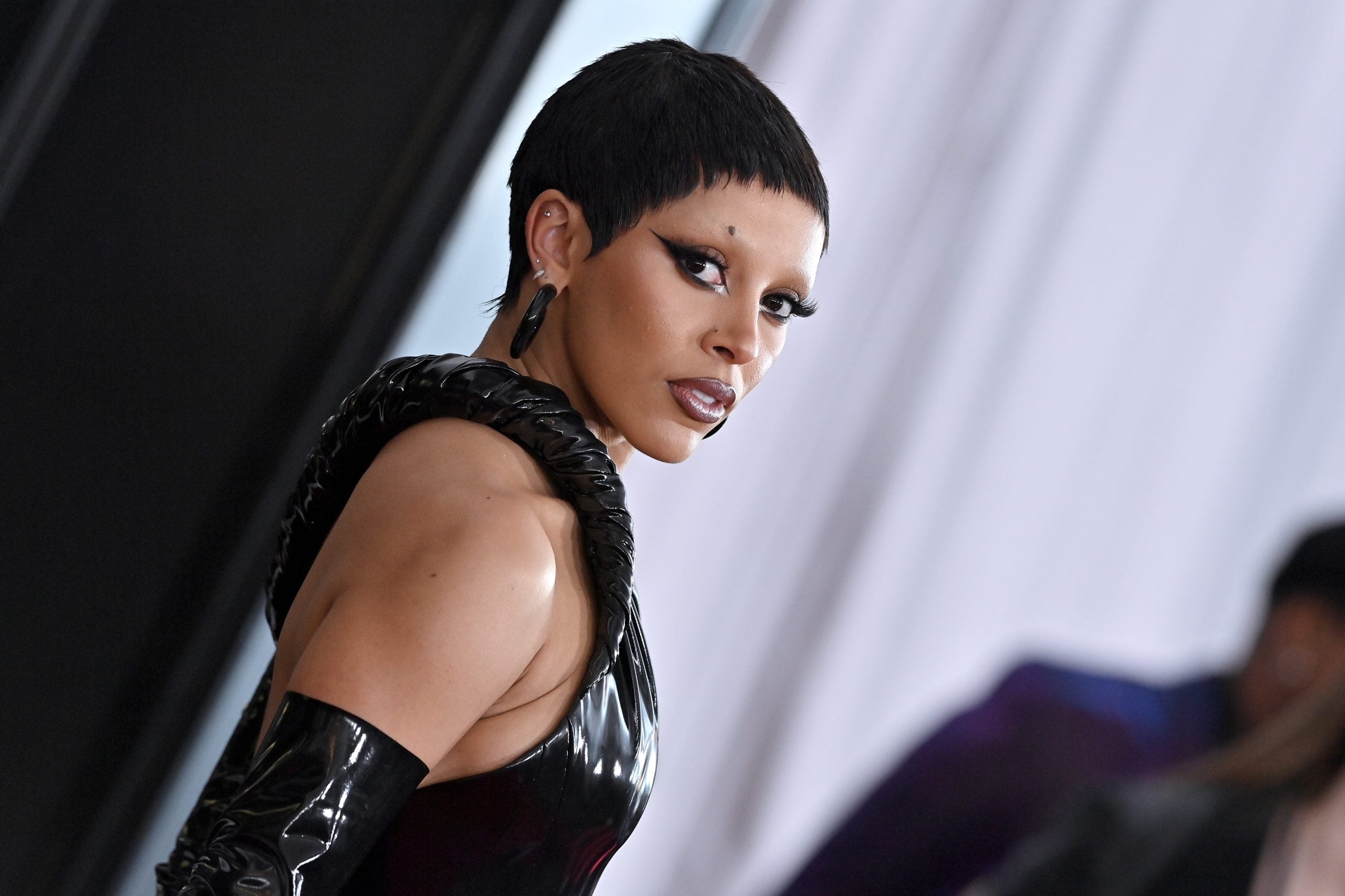



Musically, she’s also equally experimental. She’s never afraid to bring her fun approach to R&B-inspired cuts like “Streets” or rap energetically over dynamic production as heard on the cut “Need To Know.”
Women in rap’s impact reverberates across generations. What’s most important for each of them is that with their choices, outfits and dynamic red carpet looks, they’ve also opened up conversations about influence and power. The development of their unique lens on fashion has also pushed hip hop music forward culturally, this is perhaps the most distinct part of the role they’ve played in the past 50 years.
This post was originally published on this site be sure to check out more of their content.





